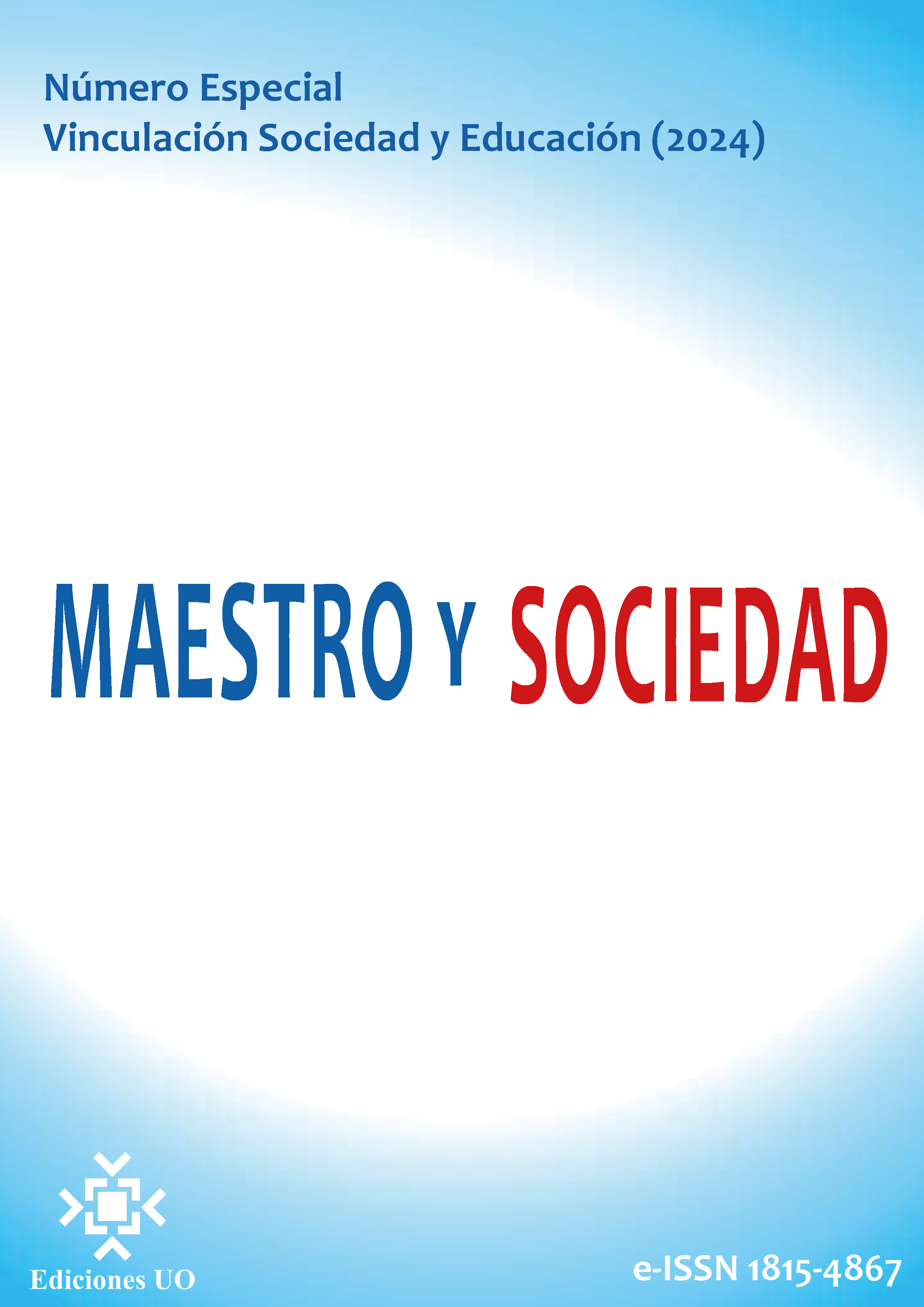Messaging application for activating community safety systems via Internet of Things
Keywords:
technological innovation, artificial intelligence, vulnerable groups, IoT, securityAbstract
Introduction: This work focuses on the development of a device aimed at neighborhood safety as an activity of connection with society, addressing the lines of health, well-being, education, innovation and technology. Taking as a starting point the World Health Organization's definition of health which mentions that it is "a state of complete physical, mental and social well-being, not only the absence of illnesses or diseases" it can be said that the insecurity experienced neighborhoods and the country in general, makes healthy coexistence impossible, from which the problems surrounding a good life originate. Materials and methods: The research-linkage project through which the system has been developed allows the remote activation of sirens through the use of IoT. The use of artificial intelligence based on the use of bots created in the Telegram messaging application allows the person and the system activation scenario to be recognized. Results: From the statistics collected, it is determined that the elderly are one of the vulnerable groups as a priority and when analyzing that they are those who do not have access to the use of technology. Discussion: It is detailed that the subline to be discussed is innovation in communication technologies that are key to improving the well-being of vulnerable social sectors by resorting to academia to solve the problems present in the reality of each social group. Conclusions: The percentage of activations by command showed that 59% of incidents are due to sex workers in the Antonia Vela neighborhood located in the commercial sector of the Latacunga canton, indicating that each specific area required its own security commands that adhere to to the social reality in which they develop, thus allowing them to resolve their common problem with certainty.
References
Al Día Online. (15 de julio de 2021). Al Día Online. Obtenido de COMITÉ PROVINCIAL DE SEGURIDAD DEFINE ESTRATEGIAS DE CONTROL: https://aldiaonline.net/?p=145775
Chinchilla, L., & Vorndran, D. (noviembre de 2018). Banco Interamericano de Desarrollo. Obtenido de Seguridad ciudadana es América Latina y el Caribe : https://publications.iadb.org/publications/spanish/viewer/Seguridad-ciudadana-en-America-Latina-y-el-Caribe.pdf
Coronado, A. (2020). La inseguridad ciudadana en los espacios públicos de la urbanización Rumipamba de las rosas del cantón Salcedo modelos de gestión de seguridad, año 2018. Latacunga: Universidad Técnica de Cotopaxi (UTC).
Dammert, L., Mujica, J., & Zevallos, N. (2017). SEGURIDAD. Consorcio de Investigación Económica y social.
Departamento Canadiense de Asuntos Externos y Comercio Internacional. (29 de Abril de 1999). Summit of Americas. Obtenido de http://www.summit-americas.org/canada/humansecurity-english.htm
Jaitman, L., Capirolo, D., Granguillhome, R., Kefer, P., Leggett, T., Lewis, J., . . . Torre, I. (2017). Los costos del crimen y la violencia: nueva evidencia y percepciones en América Latina y el Caribe. Banco Internacional de Desarrollo.
Mockus, A., Murraín, h., & Villa, M. (2012). Antípodas de Violencia. Banco Interamericano del Desarrollo.
Ortega, K., & Pino, S. (2021). Impacto social y económico de los factores de riesgo que. Revista Espacios, 52 - 70.
Pereira, J. P. (2006). Dipòsit digital de documents de la UAB. Obtenido de https://ddd.uab.cat/record/36774
Programa de las Naciones Unidas para el Desarrollo. (2013). Sinosis: Seguridad Ciudadana. Obtenido de Prevención de crisis y recuperación: https://www.undp.org/es/publications/informe-sobre-desarrollo-humano-2013
Programa de Naciones Unidas para el Desarrollo. (15 de abril de 2014). Programa de Naciones Unidas para el Desarrollo. Obtenido de Sinopsis: Seguridad Ciudadana. https://www.undp.org/sites/g/files/zskgke326/files/publications/08022013_citizen_security_issue_brief%20(spanish).pdf
Sánchez, V., Arteaga, I., & Gómez, S. (2020). Análisis sobre seguridad ciudadana y desarrollo local en Ecuador. Polo del Conocimiento, 759 - 773.
Soto, D. A. (octubre de 2022). Repositorio Institucional Uniandes. Obtenido de https://dspace.uniandes.edu.ec/bitstream/123456789/15036/1/UA-MSC-EAC-027-2022.pdf
Tudela, P. (2005). Fundación Henry Dunant. https://www.fundacionhenrydunant.org/images/stories/biblioteca/derechos-humanos-seguridad/Tudela%20Conceptos%20y%20orientaciones%20para%20pol%C3%ADticas%20de%20seguridad%20ciudadana.pdf
Zapata, A. J. (5 de febrero de 2020). Revistas UAM. Obtenido de Relaciones Internacionales: https://revistas.uam.es/relacionesinternacionales/article/view/relacionesinternacionales2020.43.008/11887
Published
How to Cite
Issue
Section
License
Copyright (c) 2024 Diego Paúl Corrales Vargas, Byron Pául Corrales Bastidas, Mauro Darío Albarracín Alvárez, Jorge Esteban Ramírez Jimenez

This work is licensed under a Creative Commons Attribution-NonCommercial-NoDerivatives 4.0 International License.
This journal provides immediate open access to its content, based on the principle that offering the public free access to research helps a greater global exchange of knowledge. Each author is responsible for the content of each of their articles.



























 Universidad de Oriente
Universidad de Oriente 